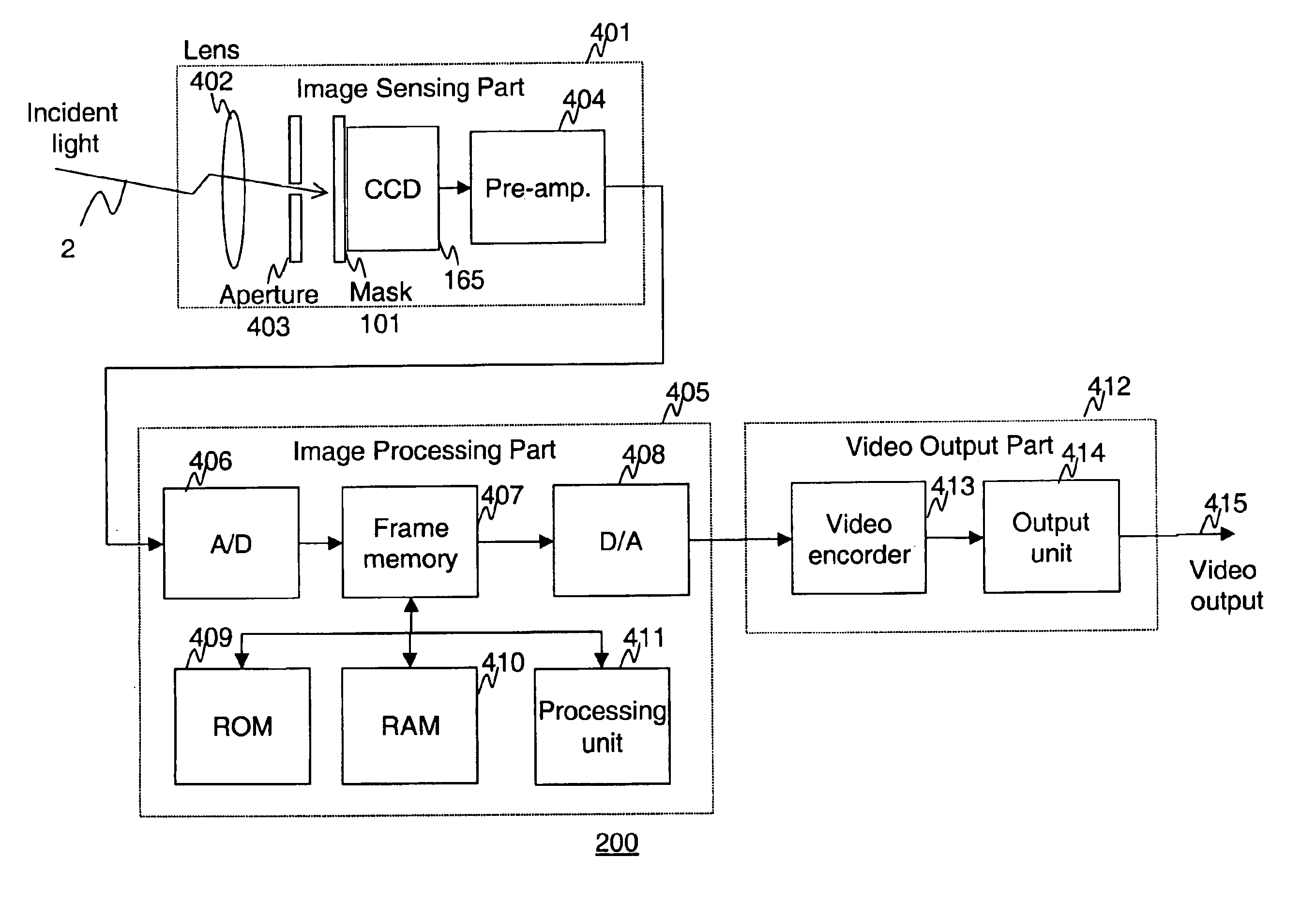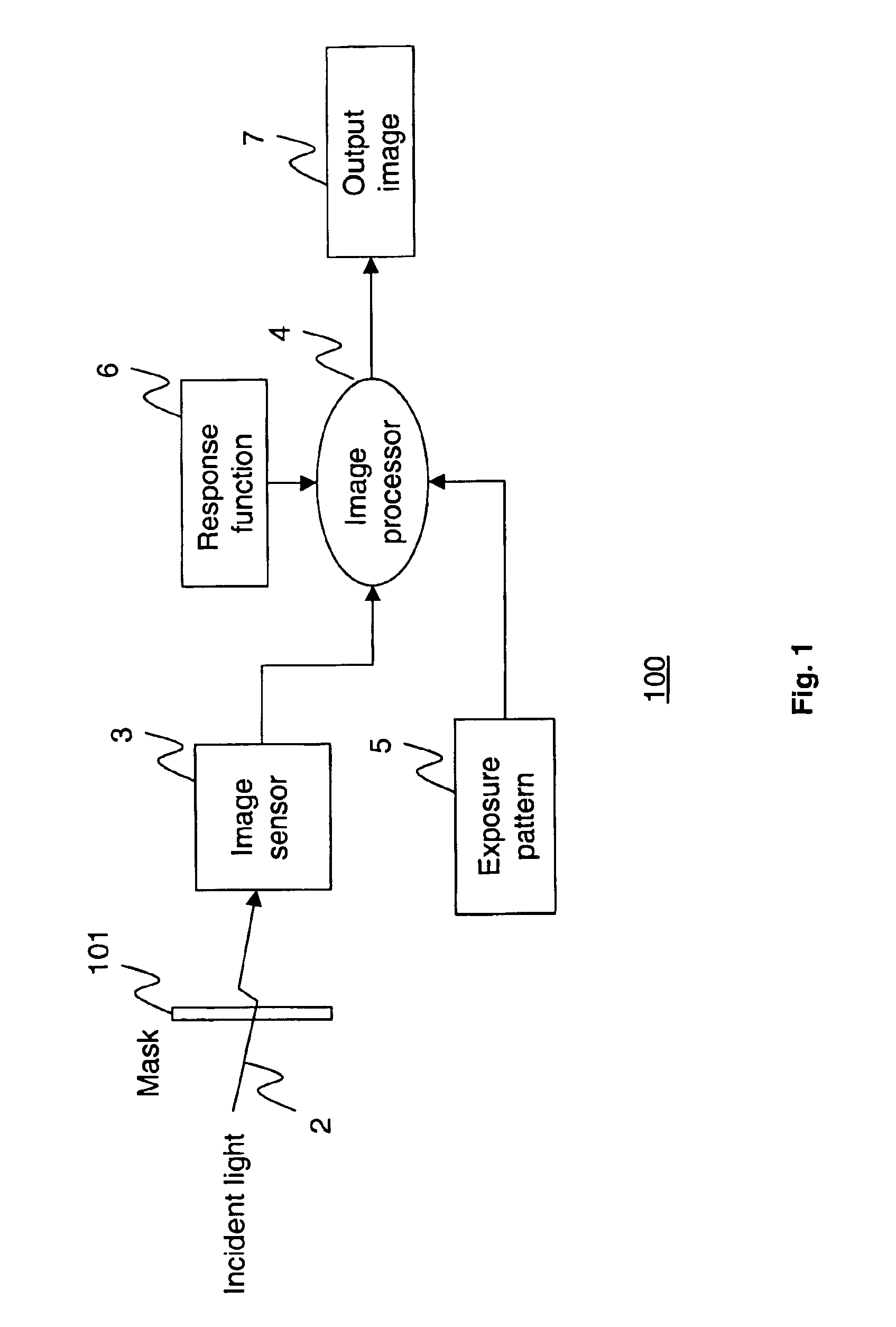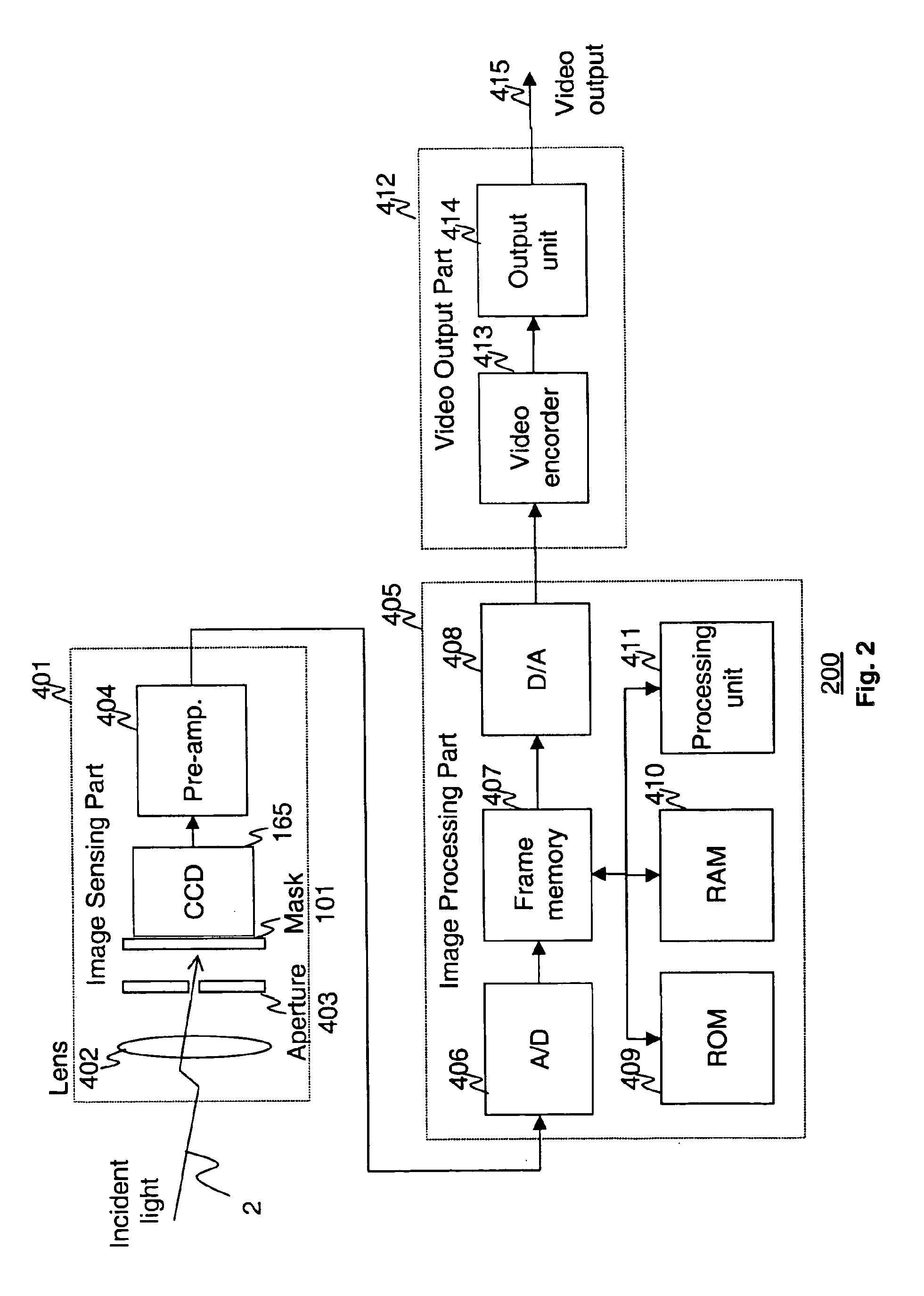Apparatus and method for high dynamic range imaging using spatially varying exposures
a high-dynamic range, image sensor technology, applied in the direction of color television, television system, color signal processing circuit, etc., can solve the problems of insufficient capture of insufficient dynamic range of known image sensing devices, and inability to capture the fine details of most real-life scenes. , to achieve the effect of substantial loss of image detail
- Summary
- Abstract
- Description
- Claims
- Application Information
AI Technical Summary
Benefits of technology
Problems solved by technology
Method used
Image
Examples
Embodiment Construction
Referring now to FIG. 1, there is shown a functional diagram of an imaging system 100 according to a first exemplary embodiment of the present invention. The system 100 includes a mask 101 through which incident light 2 from a scene (not shown) passes before impinging on an image sensor 3. The image sensor 3 senses an image of the scene as transmitted by the mask 101 and provides corresponding pixel values to an image processor 4, which is coupled to a response function memory 6 and an exposure pattern memory 5 and which provides high dynamic range image data to an output image memory 7. The mask 101 is a plate of transparent material which has neutral characteristics with respect to the wavelengths of the incident light and has a fixed spatial pattern of transparency in the region through which the incident light 2 passes. The term “light” as used in the specification and claims refers to electromagnetic radiation spanning the spectrum from the millimeter wave region to the gamma r...
PUM
 Login to View More
Login to View More Abstract
Description
Claims
Application Information
 Login to View More
Login to View More - R&D
- Intellectual Property
- Life Sciences
- Materials
- Tech Scout
- Unparalleled Data Quality
- Higher Quality Content
- 60% Fewer Hallucinations
Browse by: Latest US Patents, China's latest patents, Technical Efficacy Thesaurus, Application Domain, Technology Topic, Popular Technical Reports.
© 2025 PatSnap. All rights reserved.Legal|Privacy policy|Modern Slavery Act Transparency Statement|Sitemap|About US| Contact US: help@patsnap.com



